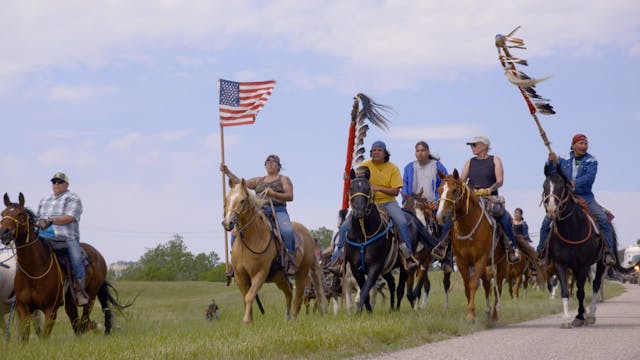Unbearable: Sandy Hook 10 Years Later
Big Story
•
58m
On December 14, 2012, twenty children and six adults lost their lives to a 20-year old wielding an assault rifle against them at the Sandy Hook Elementary School in Newtown, Connecticut. The horrific death toll and the fact that it was an elementary school shocked a country that seemed to have grown increasingly numb to mass shootings, even in schools, since the 1999 massacre of thirteen students in the local high school in Columbine, Colorado. Then-president Barack Obama and other supporters of greater gun control pledged to change America’s long relationship with guns. But in the end, their efforts at banning assault rifles would fail.
The survivors of the victims of Sandy Hook have strived to make meaning of the killings, through the initiative Sandy Hook Promise, pushing for stricter controls for gun sellers, specifically assault-type rifles designed for maximum efficiency on the battlefields. The organization also works in schools to train children to spot the signs of a possible mass shooter.
A decade after the killings at Sandy Hook, the frequency of these events seems to have spiked. 2022 is the third year in a row that the United States recorded over 600 mass shootings, more than one per day, according to the Gun Violence Archive. November saw two mass shootings in three days, and then another one where the victims were students at the University of Virginia.
Over this period, the landscape of guns and gun ownership would also keep shifting, with ever more Americans owning guns, including women and minorities. The rise of 3-D printers allowing users to produce their own guns at home would also add a layer of complexity to the issue.
Up Next in Big Story
-
Abandoned – Afghanistan After the U.S...
Following the 2001 U.S.-led invasion that ousted the Taliban, Afghanistan had less than 50 miles of paved roads in the entire country. A 2,000-mile national highway network connecting major cities had been pulverized by decades of war and neglect. Confident that it would become the backbone of a ...
-
The Race Gap in the U.S. – Native Ame...
Native Americans are the most vulnerable minority in the United States. This episode of the series The Race Gap in the U.S. takes us to South Dakota, homeland of the Lakota people, to examine why this came to be. It was in the Dakota Territories where the «progressive» experiment with the boardin...
-
The Race Gap in the U.S. – Hispanics
At the turn of this century, Hispanics became the largest minority group in the United States. This milestone, however, hasn’t changed the way members of the community are being treated by authorities. Whether it’s migrants trying to cross the border in search of a better future, or just people g...



